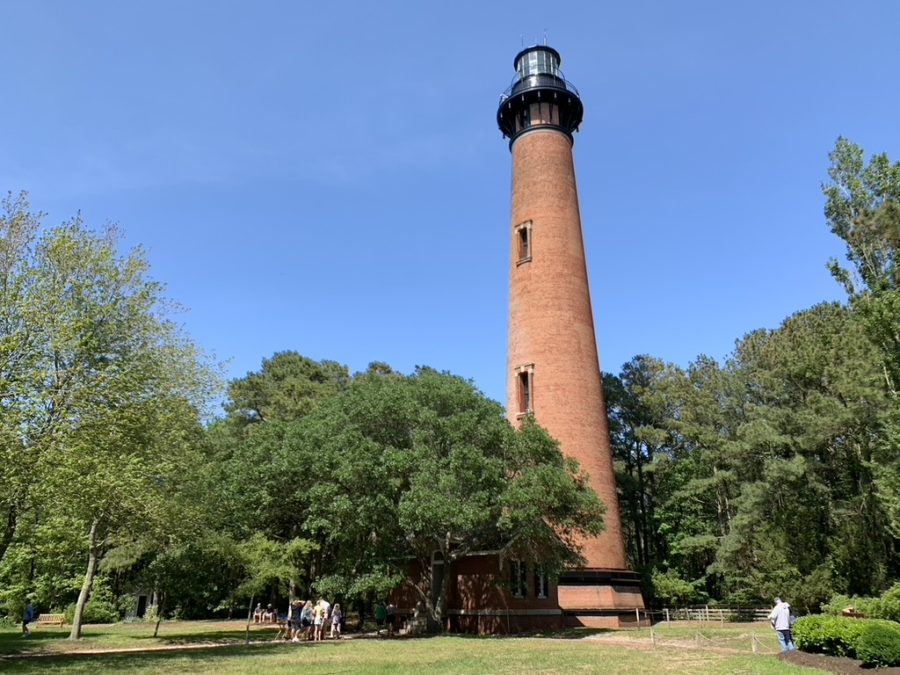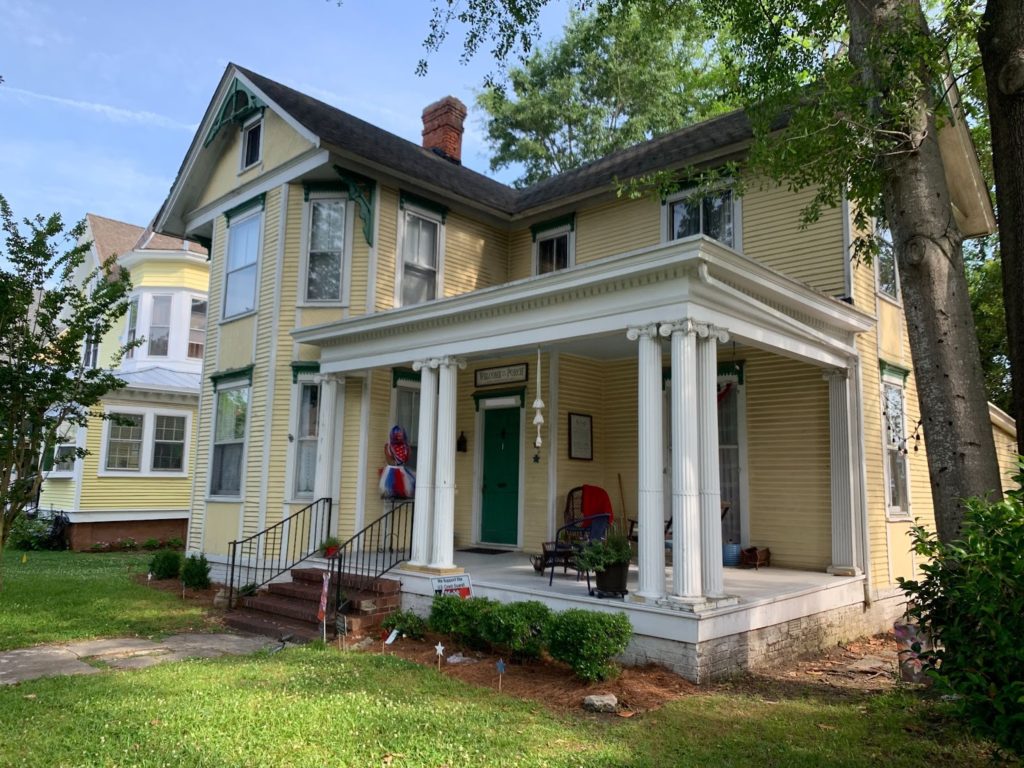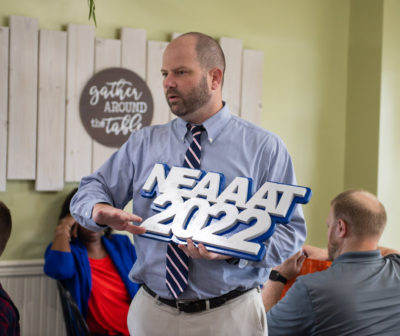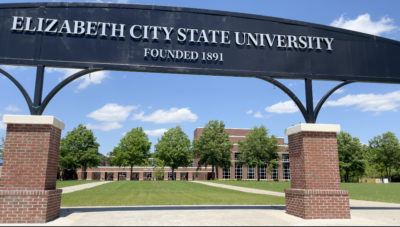Editor’s Note: We are publishing a series of travel diaries this week. These pieces are part of our effort to deepen our reach across the state and build closer connections to communities in all 100 counties.
In the far northeast corner of the state, the counties are long, skinny fingers reaching down from the Virginia border toward the Albemarle Sound.
It generally takes about 15 minutes to drive east or west across Currituck, Camden, or Pasquotank County. The drive north from the southern tip of any of them typically takes three times as long, and it’s not unusual to accidentally find yourself in Virginia.
Their geographies make it easy for people to move in and out throughout their lives, so being a local doesn’t necessarily mean being from one county.
I was once a local myself.
I’m a product of Elizabeth City-Pasquotank Public Schools. My first job was at Elizabeth City’s only movie theater. I learned to drive on the rural roads of these three counties, crossing them to get to the beaches of the Outer Banks any chance I got.
The last time I had a permanent address here was 2004, slightly more than half a lifetime ago. And while there have been changes in the area since I left, the people reminded me it was still home.
Currituck County
Currituck County is the northeasternmost county in the state. It’s divided by water into three sections: the northernmost Outer Banks, Knotts Island, and the mainland.
The population of Currituck is almost 30,000 and 87% white, with Black and Latinx people making up approximately 5% of the population each. There are eleven public schools in Currituck County, led by Superintendent Matt Lutz.

People from outside of the area are probably most familiar with the section of Currituck on the Outer Banks, where Corolla is home to the Currituck Beach Lighthouse and wild horses.
In all my life, I have never seen these horses. Apparently, that’s because I’ve been going about it all wrong. One local told me you have to “air down” the tires on your four-wheel drive vehicle and hit the sands of Carova Beach for guaranteed sightings.
What I did see on this trip that I had never seen before was Knotts Island.
You can drive there by spending an hour or more driving north into Virginia from the mainland and then south onto the island, or you can do what I did and take a free 40-minute ferry from the town of Currituck across Currituck Sound.

I’m pretty much always going to take a ferry to somewhere when given the chance, but if I needed any extra convincing, it came from reporter Jeremy Markovich in an episode of the Away Message podcast he made for Our State magazine.
In it, he asked a student who was riding a school bus on the ferry what would happen if he missed the bus. The student explained that a parent would have to drive ninety minutes to take him to school, then ninety minutes home again.
I had to see this high stakes bus route for myself.



Almost all of the buildings on Knotts Island are residential. For example, when you drive off the ferry you’re just in the middle of a neighborhood. And these are mostly the homes of full-time residents. While there’s some new development happening on the north end of the island, this isn’t a resort town or vacation spot. Yet.
An island staple is Knotts Island Market. Until the recent addition of a Dollar General, this was the only store of any kind on the island. I was there on a blisteringly hot day, so the ice cold drinks they keep stocked were a blessing as I criss-crossed the island.

The distinction between North Carolina and Virginia is slim here. I accidentally found myself suddenly in Virginia at one point, which is how I learned that the northern tip of the island is technically part of Virginia Beach. Even the license plate on the car delivering mail the day I was there was Virginian.

While the main roads are primarily residential, the vast majority of the island is the Mackay Island National Wildlife Refuge. The refuge was established in 1960 to protect migratory birds. Along the main road through the refuge are spots to watch the birds as they fly overhead, clearly thriving in this natural habitat.
On my ferry ride back to the mainland, I chatted with someone who grew up in Currituck County. When I told him I grew up in Pasquotank County, we immediately figured out we’d each been friends with different siblings from the same family. He’d also been incarcerated at Pasquotank Correctional Institution when my dad was teaching classes there for the College of the Albemarle. Talking to him was the moment I realized a part of me would always be a local here.
Back on the Currituck mainland, things tend to be more geared toward folks traveling to and from the Outer Banks, but there’s no shortage of rural northeast North Carolina gems. I recommend stopping in at the Morris Farm Market if you’re looking for local flavors. And you can’t visit Currituck County without marveling at Grave Digger, the iconic monster truck that calls this county home.
Camden County
Having grown up in the area, my main memory of Camden County is from high school.
All of my friends were going to a house party on the Pasquotank River that was being thrown by someone I barely knew. My mom insisted on driving me there instead of letting me ride with my friends because she wanted to see for herself whether this party would be supervised by adults.
Readers, it was not.
We heard the party before we saw it, and my mom just smoothly cruised on by, pulled a three-point turn, and drove me right home again. She told me I was more than welcome to blame her when my friends asked why I wasn’t there. (Thanks, mom!)
I do not think this experience is representative of life in Camden County, but it did give me some personal motivation for getting to know the county a little better.
Camden County’s population is nearly 11,000. The vast majority of residents are white (81%) with the next largest proportion being Black (12%). The county’s five public schools fall under the leadership of Superintendent Joe Ferrell.

One thing I remembered about Camden County was occasionally getting breakfast from the Belcross Bake Shoppe on my way to the Outer Banks. I don’t care where you live in North Carolina, it will be worth the drive out to Camden County just to eat here. They offer breakfast every morning except Sunday, and prayers all week long.
Since most of my experience with Camden County was driving across it, I made a point of driving north toward Virginia and south toward the Albemarle Sound on this trip. My drive south found me at One Mill Park on the Pasquotank River.

It was a blazingly hot and humid day, and everyone I chatted with in the park suggested going for a swim. A 12-year-old who had just finished her sixth grade school year had lots of tips for me; chief among them was to avoid touching the river bottom — a crab had pinched her toe a few summers back, prompting her to wear water shoes on subsequent swims.
I dropped into the river from a ladder on the dock and swam around with my new pal while her godfather watched from the dock.
I lost track of time in more ways than one while we floated and chatted about what middle school might be like for her this fall. Treading water in this river with the warm breeze blowing over us, it was all too easy for me to remember my own middle school anxieties and to imagine the raucous house parties she’d be invited to in a few short years.
Mostly I just listened, dunking my head under the water whenever she alerted me to the presence of a horsefly. Eventually, her godfather managed to coax her out of the water for their short drive home.
Floating alone in the river I grew up on, but in a place I’d never visited before, I was home.
Pasquotank County
I told myself and my colleagues that I was making my home county the last stop on the list of counties I visited this spring because that was the only way to guarantee my favorite ice cream shop would be open for the season.

That explanation was true. But it was also incomplete.
I made it my last stop because I was scared. For me, Elizabeth City is full of ghosts.
Maybe that’s because when my family moved to Elizabeth City in the mid-1990s, we spent our first ten days unexpectedly living in a century-old haunted house downtown where each of us had separate ghostly experiences.

Or maybe it’s because three people close to me killed themselves in this town.
I’ve never seen their ghosts, but I’m haunted by their deaths.
[If you or someone you know may be considering suicide, contact the National Suicide Prevention Lifeline.]All of this made me a little scared to return to my hometown.
What helped me start feeling a little less scared was the warm welcome I received from my hosts at the River City Lodge. In addition to an assortment of snacks and bottled water, the welcome package in my suite included a handwritten note with a gift card to my favorite local coffee shop, Muddy Waters Coffeehouse, located just two blocks away. It was a small, sweet gesture that reminded me my hometown is more than just the trauma I experienced there.


Pasquotank County is home to approximately 40,000 people, almost half of whom live in Elizabeth City. Elizabeth City-Pasquotank Public Schools are under the new leadership of Superintendent Keith Parker, formerly of Dare and Edgecombe counties. Elizabeth City is also home to a community college, a private religious university, and a public historically Black university — College of the Albemarle, Mid-Atlantic Christian University, and Elizabeth City State University, respectively.
The city and county have distinct demographics.
Pasquotank County’s population is 54% white, 37% Black, and 6% Latinx.
By contrast, Elizabeth City’s population is 51% Black, 37% white, and 7% Latinx.
If you’re paying close attention, you’ll note that the county is majority white, while the city is majority Black. This has been a contributing factor to the area’s history of racial tensions, from Wild’s Raid during the Civil War to the police killing of Andrew Brown Jr. in 2021.
Elizabeth City sits at a curve in the Pasquotank River, right before the river widens on its way toward the Albemarle Sound. While my main memory of the waterfront is drinking from a bottle of Richards Wild Irish Rose in the backseat of someone’s red 1992 Chevy Camaro when I was in high school, it’s better known among boaters as the Harbor of Hospitality.

For boaters traveling the Intracoastal Waterway, Elizabeth City offers free docking for 48 hours. In addition to that amenity, when I was growing up here Fred Fearing was a local celebrity for upholding the tradition of the Rose Buddies, delivering roses to visitors and hosting wine and cheese receptions for them. Today, visitors can learn more about this and other local history across the street at the Museum of the Albemarle.
My experience of visiting my hometown was a mix of nostalgic and novel experiences. At the recommendation of a former resident (aka my mother-in-law), I ate dinners at an old favorite (3 Amigos) and a new staple (Hoppin’ Johnz). I also checked out a recent addition to the waterfront (Seven Sounds Brewing Company) before strolling by a completely unchanged mid-century modern architectural icon (Rochelle Cleaners).

I made the conscious decision to end my visit by making new memories of the place I once called home. I stopped in at The Kraken Coffee House to caffeinate for my drive back to the Triangle. It actually reminded me of some of my newer Raleigh haunts with its stylish wallpaper and branded aesthetic.

My last stop was a small waterfront park where Knobbs Creek empties into the Pasquotank River. I stumbled across it while driving around, testing my memory of the city’s geography.
Tucked at the end of Poindexter Street, across from a lumber mill I never knew existed, the park is operated by Mid-Atlantic Christian University (formerly Roanoke Bible College). It proved a perfect place for some somber reflection on what it means to go home.

Recommended reading



